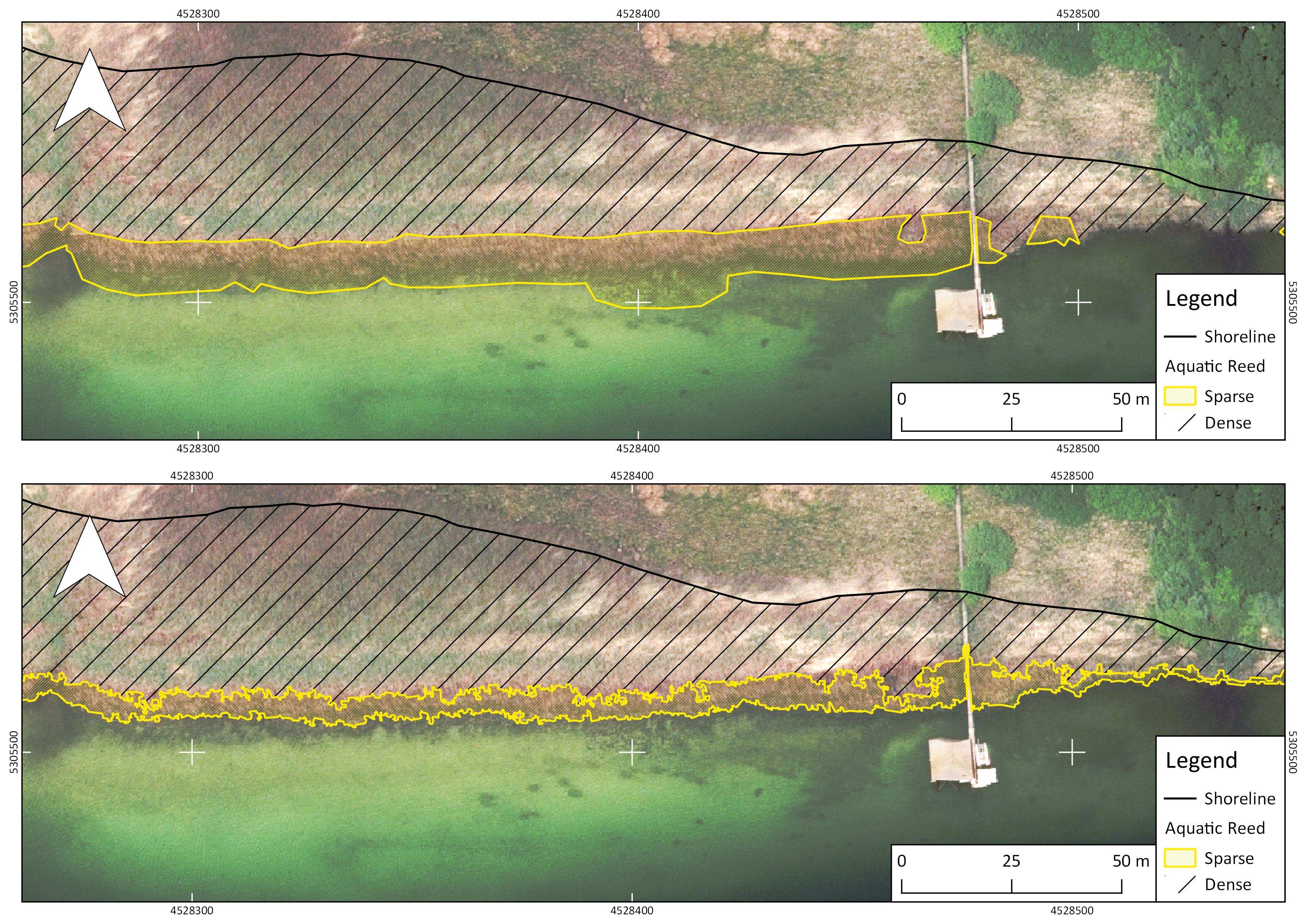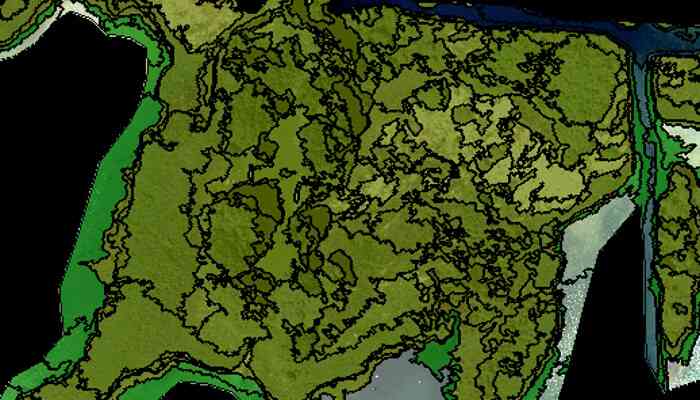Assessing the Suitability of OBIA in Mapping Aquatic Reed Beds from CIR Imagery
Compared to pixel-based methods, where only the spectral information of individual picture elements (pixels) is considered for mapping, Object-Based Image Analysis (OBIA) operates on localized groups of pixels, taking into account the spatial properties of each pixel in relation to others. This method is akin to the human visual interpretation of digital images, in which individual pixels are grouped into larger objects based on color, shape, size, and texture. The first step in OBIA is the creation of object primitives, which are defined after image segmentation. These object primitives are delimited based on pixel values and represent a group of pixels within a defined space, offering a wide range of information.
Object primitives after image segmentation
To evaluate the suitability of OBIA for mapping aquatic reed beds, two classification methodologies were implemented and compared in terms of accuracy. This study addresses the following questions:
- How accurately can aquatic reed beds be mapped by processing official CIR (color infrared) imagery with OBIA?
- How accurately can the density of aquatic reed beds be mapped by implementing manual delineation through visual interpretation of CIR orthophoto imagery?
 Comparisson between manual (top) and OBIA (bottom) image analysis
Comparisson between manual (top) and OBIA (bottom) image analysis
